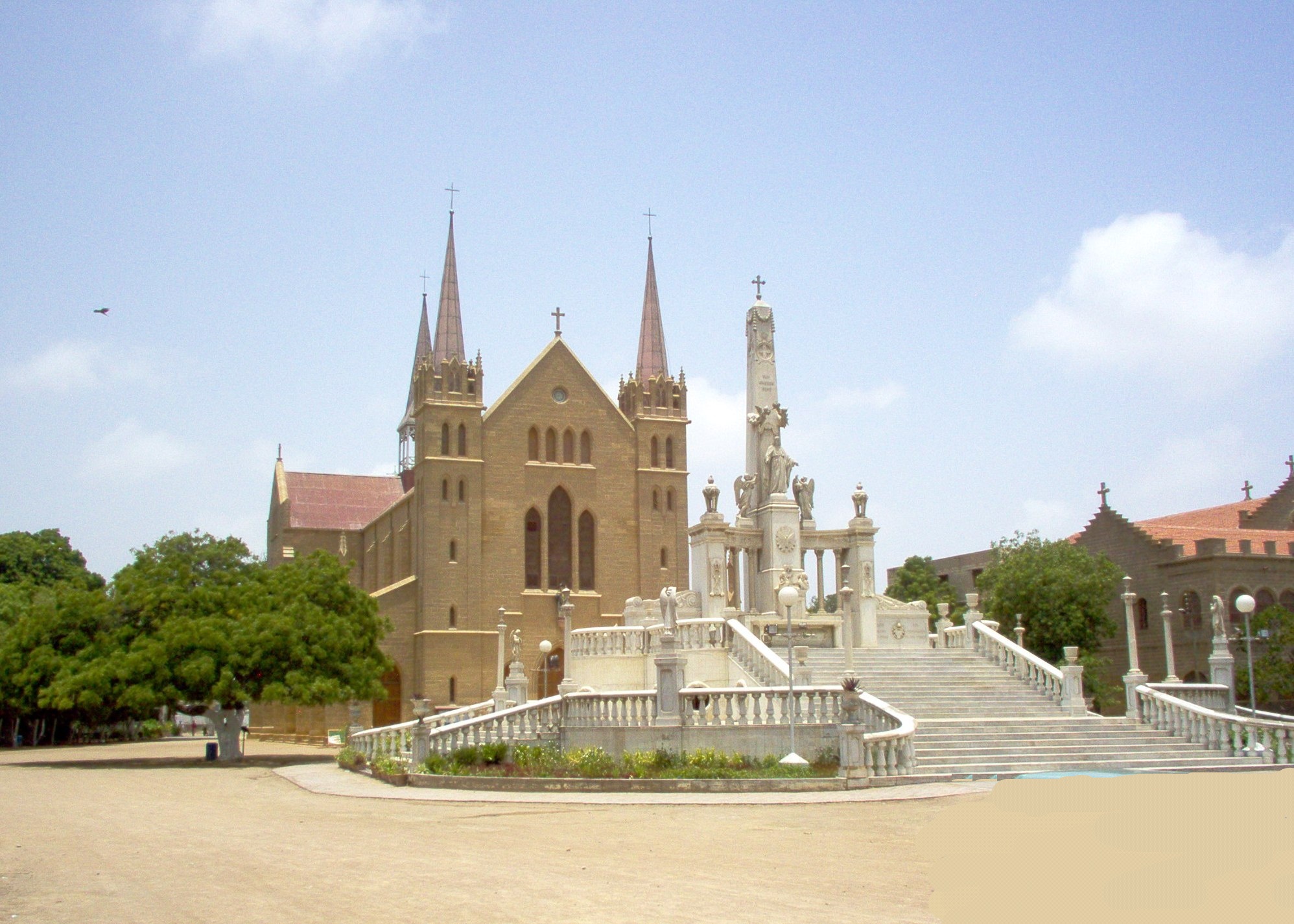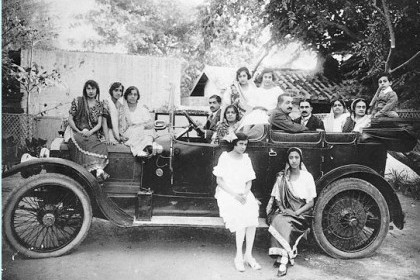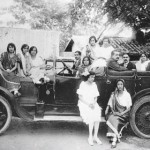This is the fourth and final part of Gateway House’s series on Partition and Bombay. Read the first part, the second part, and the third part.
The eruption of violence on the sub-continent early 1947 onwards – prior to Partition in August – led to the displacement of 15 million people (Hindus, Muslims, Sikhs) on both sides of the border.[1] But these numbers obscure the narratives of communities, like the Pakistani Goans (a few Christian Mangaloreans too), Parsis and Bene-Israel Jews, who were early migrants to East India Company Bombay in the 17th and 18th centuries, and used the island city as a springboard for job and business opportunities in the newly annexed provinces of Sindh (1842) and the Punjab (1849).
All three communities once formed the bedrock of the educated middle class in urban centres of what was to become Pakistan, holding important jobs in the Karachi Port Trust, North Western Railways, postal services, civic and provincial administrations. The Parsis, in particular, opened businesses in shipping, hotels, breweries, construction, general provision stores, and liquor shops, into which Goans went too, and built institutions just as they had done earlier in Bombay. Karachi had its Magen Shalom Synagogue (b.1893) to cater to its 1,051-strong congregation in the early 20th century[2]; two Parsi fire temples and dokhmas (Tower of Silence), and its majestic St. Patrick’s Cathedral and a church for every parish, a pattern that was repeated in Lahore and Multan.

The seamless integration and setting down of roots by these three communities, and the fact that they were all non-Hindu minorities, meant that Partition did not impact them immediately. In fact, Quaid e-Azam Mohammed Ali Jinnah, a Bombay lawyer and the founder of Pakistan, declared barely three days (11 August 1947) before the formation of the new state, “You are free; you are free to go to your temples, you are free to go to your mosques or to any other place of worship in this state of Pakistan.” What he envisaged was a secular state in a Muslim majority nation.[3]
Geopolitical triggers and Islamisation
“Religious tolerance was maintained and no noticeable tension existed between Jews and Muslims, and this feeling was mutual because of Governor General M.A. Jinnah’s friendship towards them,” according to Yoel Moses Reuben, a Lahore-born Jew and author of The Jews Of Pakistan: A Forgotten Heritage (2010). Yet, the first community to uproot itself was the Marathi-speaking Bene-Israel. The pressure on them to leave actually began with the inflow of community members from Peshawar and Multan, who fled to Karachi on their way to Bombay, because of anti-Zionist rhetoric in mosques, and demonstrations following the UN General Assembly’s vote on 29 November 1947, sanctioning the partition of Palestine.[4]
Then in January 1948, Partition riots broke out for the first time in Karachi, Pakistan’s first capital city, followed soon after by the ransacking, partial burning down, and encroachment on the premises of its synagogue. This impelled the migration of the community to Bombay and Israel.[5]
Rebecca (nee Mendrekar) Samuel, who was 13 years old when her family left Karachi, recalls that uncertain time. “Our Muslim neighbours’ were very good. During curfew, when no one could go out, one lady whose father was a minister, would procure fresh vegetables and milk for everyone in the building. We even had a Sikh family who lived there. They made sure the building gates were bolted and no mobs were allowed in.”[6]
According to the Central Jewish Board in Bombay, 130 families had arrived by April 1948, and by the end of that month almost another 1,000 persons.[7]
These events did not impact the Christian community, which was largely Goan and not considered Indian even, as Goa was then a Portuguese colony. The Goan Christians and Parsis had a privileged life initially in the new state, with the post-independence generations reaping the benefits of schools, colleges and hospitals that their forefathers had founded in the late 19th and 20th centuries. They travelled by sea to Goa during Christmas and New Year’s and moved in the best social circles in Karachi – “But even in these early years, Muslims were given preference for top jobs,” says Yvonne Mascarenhas, whose husband Anthony (Tony) was chief correspondent in New Delhi for Pakistan’s Morning Post (1963-65) and very friendly with the future prime minister Hussain S. Suhrawardy, “who was then law minister and loved to dance and party.”[8]
Tony’s reportage of the genocide in East Pakistan (Bangladesh) before the outbreak of the 1971 Indo-Pak War led to the family leaving its home in Karachi.[9] The Mascarenhases lived in Karachi for 10 years (1952 to June 1971), a period when Karachi society was still very cosmopolitan. However, as Farahnaz Ispahani, frames it in her book, Purifying The Land Of The Pure: Pakistan’s Religious Minorities, “For thirty years after Independence, Pakistanis at least debated the role of Islam in matters of state, even as the political balance shifted against secular and pluralist ideas.”
Clearly, not everything went as Jinnah had nobly imagined. As Mascarenhas points out, the new state did not look favourably upon Punjabi converts to Christianity, and in one instance, even sought the forfeiture of their lands in West Punjab, which led many to flee south to Karachi: today, it is they who largely form the clergy and run community institutions there.
The Islamisation of Pakistan began as early as 1949 when the Constituent Assembly declared that the objective of the Pakistan Constitution was the creation of an Islamic State. This process reached its apogee during the military dictatorship of General Muhammad Zia-ul-Haq from 1977 to 1988. General Zia’s missionary zeal received added vigour from the foreign funds pouring into the country to fight the Soviet occupation of Afghanistan in 1979. The creation of sub-national, right-wing militia groups, mentored by the Pakistan Army’s Inter-Services-Intelligence (ISI) during this period, to fight a proxy war in Afghanistan, resulted in a violent backlash on its minorities too – both non-Muslim, and Muslim, such as the Shias and Ahmadis.[10] Consequently, there was a large migration of Pakistani Goans to Canada and Australia, and the fortification of their churches.
Karachi’s Parsi community
The Parsis of Pakistan, who number about 1,100, are also showing increased migration rates, more so as the Karachi Parsi Anjuman Fund is helping those under 45 years of age to move to Canada for better opportunities.[11]

Today, senior members of this community are confident, though, of a reverse migration. Percy Gazder, trustee, Jehangir Rajkotwala Baug Trust (Karachi), says, “The opportunities are in Pakistan today because of the China Pakistan Economic Corridor, which has resulted in an economic upswing. Some of our prominent Parsi business groups, such as the Avari group of hotels and B.D. Sethna Provision Stores, are benefiting from this.”
The Parsis and Goans in Pakistan, who are mainly concentrated in Karachi, continue running their institutions and businesses despite the political and demographic disadvantages they face – the number of non-Muslim minorities has only increased from 2.88% in Pakistan (former West Pakistan) in 1951 to 3.73% today[12]. But the socio-cultural facets associated with them – Western classical music concerts, English theatre and a range of cuisines – have brought in much needed diversity to what has become a monochromatic Islamic State.
Sifra Lentin is Bombay History Fellow at Gateway House.
This is the fourth and final part of Gateway House’s series on Partition and Bombay. Read the first one here, the second one here, and the third one here.
This article was exclusively written for Gateway House: Indian Council on Global Relations. You can read more exclusive content here.
For interview requests with the author, or for permission to republish, please contact outreach@gatewayhouse.in or 022 22023371.
© Copyright 2017 Gateway House: Indian Council on Global Relations. All rights reserved. Any unauthorized copying or reproduction is strictly prohibited.
References
[1] Talbot, Ian, and Gurharpal Singh, The Partition of India (Delhi, Cambridge University Press, South Asian Edition 2013), p. 15.
[2] Reuben, Yoel Moses, The Jews of Pakistan: A Forgotten Heritage (India, Bene Israel Heritage Museum And Genealogical Research Centre, 2010), p. 75. (The population number for Karachi was 1051, rest of Sindh 148, and for Peshawar 100 persons. This is based on the Census of 1941.)
[3] Ispahani, Farahnaz, Purifying The Land Of The Pure: Pakistan’s Religious Minorities (Noida, Harper Collins Publishers India, 2015), p. 5.
[4] National Archives, United States Government, U.S. Recognition of the State of Israel <https://www.archives.gov/education/lessons/us-israel> (Accessed on 7 September 2017)
[5] Ibid. Reuben, pp. 76-77. There is no indication of which month miscreants damaged the Karachi Synagogue and encroached on its premises, except an indication that it happened soon after President Truman’s de facto recognition of the State of Israel on 14 May 1948.
[6] Telephonic interview with Rebecca Samuel on 5 September 2017. Her recollection specifically of a curfew points to the Karachi massacre of January 1948.
[7] Ibid. Reuben, p. 77.
[8] Telephonic interview with Yvonne Mascarenhas on 3 September 2017.
[9] Evans, Harold, My Paper Chase: True Stories of Vanished Times, an autobiography (London, Abacus, 2010), p. 355.
[10] Ibid. Ispahani, p. 111. Also: Walbridge, Linda, The Christians of Pakistan: The Passion of Bishop John Joseph (New Delhi, Routledge, 2003), p. 70.
[11] Telephonic interview with Percy Gazder on 3 September 2017 on Parsi-founded and run institutions, trusts, and socio-economic conditions of the community in Karachi. Gazder’s information was supplemented by additional readings from Parsiana magazine, specifically 7 May 2015 (Loyalty to Lahore, pp. 22-25), 21 October 2015 (The Pride of Pakistan, pp. 16-19), and 7 July 2016 (Karachi’s cost-free clinic, pp. 20-21).
[12] http://lsi.gov.in:8081/jspui/bitstream/123456789/7452/1/1422_1951_POP.pdf and https://www.pbs.gov.pk/content/population-religion


